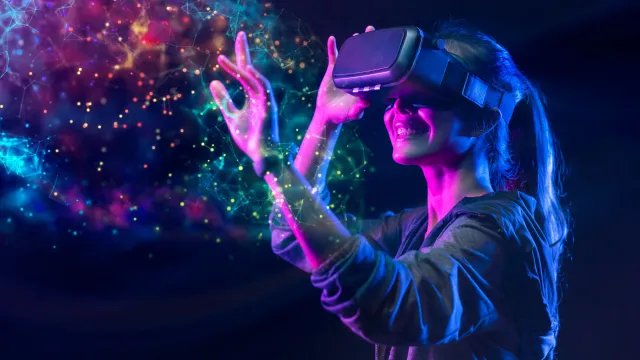
Virtual Reality in Science Education: Exploring the Universe in VR
By Adedayo Oyetoke, Published on: June 3rd 2023 4 min, 767 word Views: 1037
Virtual reality has revolutionized the way we experience and interact with digital content. VR headsets transport us to immersive virtual worlds where we can explore, learn, and engage with simulations of real or imagined environments. This emerging technology holds tremendous promise for science education. Students can take virtual field trips to explore the solar system, walk through the rainforests of the Amazon, dive deep into the ocean, or travel back in time to witness key events in natural history.
VR enables an unparalleled level of immersion and interactivity for learning about scientific concepts and natural phenomena. Students can manipulate variables and see how systems respond in real time. They gain a visceral sense of scale that is hard to achieve through textbooks or even video. For example, in a virtual reality experience of the solar system, students can grasp the immense distances between planets in a way that numbers on a page do not convey. They can peek inside a single cell or travel to the farthest reaches of the known universe. These experiences spark curiosity and inspire a lifelong love of discovery.
VR also allows for simulations that would be impossible or impractical to create in a physical classroom. Students can experience dangerous or inaccessible environments like the surface of the sun, the inside of a volcano, or the depths of the ocean. They can manipulate time to see how astronomical or geological processes unfold over vast scales. VR provides an ideal platform for "learning by doing" through interactive experiments and open-ended exploration.
However, VR also presents some challenges for educational use. The technology can be expensive, requiring high-end computers and headsets. It may require technical expertise to set up and operate. There are also concerns about students spending too much time immersed in virtual environments. When used appropriately and in moderation, though, virtual reality can be a hugely valuable tool for science education.
VR will only become more advanced, affordable, and widely available in the coming years. The opportunities for enhancing science education through virtual reality are tremendous. Students can go on virtual field trips to explore the cosmos, journey to the centre of the cell, travel back in time, and so much more. VR allows for deeply immersive learning experiences that spark curiosity about the natural world. This technology will transform science education, allowing students to explore the universe in ways never before possible.
Here are some additional points on using VR in science education:
- VR allows students to explore dangerous environments safely. Students can experience volcanic eruptions, travel to the surface of the sun, or explore deep ocean trenches without risk. This opens up many possibilities for learning that would otherwise be impossible.
- VR enables simulations that compress or expand time. Students can watch the lifecycle of a star unfold in minutes or see glaciers form and recede over millennia. This helps them grasp immense scales of time that shape our universe.
- VR provides an ideal platform for open-ended exploration and discovery. Rather than being limited to pre-defined lessons, students can follow their curiosity to make new observations and connections. This self-guided learning can be very powerful.
- Multiplayer VR experiences allow for collaborative learning. Students can join together on virtual field trips, work together to solve complex problems, or participate in interactive simulations as a team. This social element enhances the learning experience.
- VR hardware and software are becoming more affordable, accessible and easy to use. As the technology improves, schools will have more opportunities to use VR for science education. Many platforms are designed specifically for educational use.
- VR should be used in moderation to supplement traditional teaching methods. While VR provides unique benefits, it cannot replace in-person instruction and interaction. A balanced approach is needed.
- Teachers play an important role in preparing students, guiding them through VR lessons, and following up to reinforce concepts. VR is a tool that still requires skilled educators to maximize its potential.
- VR science experiences should be tailored to education standards to ensure students are learning required concepts and skills. Close alignment with curriculum objectives is important.
- Additional research is still needed on the impacts of VR on learning outcomes, cognition, and development. Long-term studies will help shape best practices for using this technology in schools.
In summary, virtual reality opens up many exciting opportunities for science education with its ability to transport students to immersive virtual environments. But it also requires careful implementation and should be used to supplement rather than replace traditional teaching approaches. With the proper balance, VR can be a powerful way to inspire students and ignite passion
